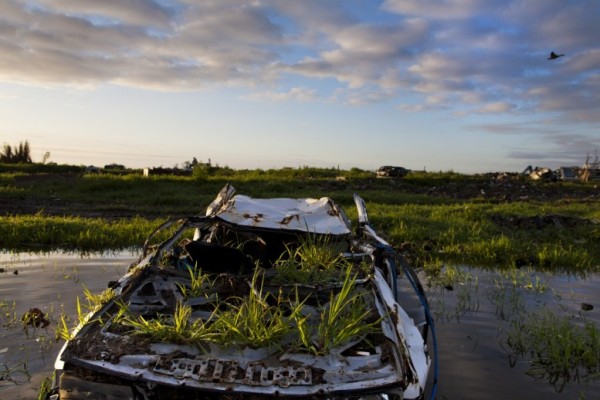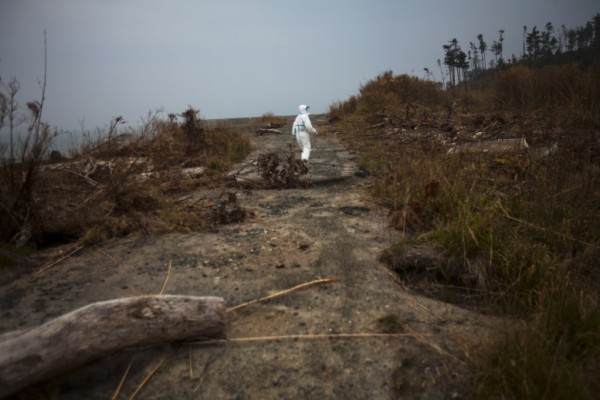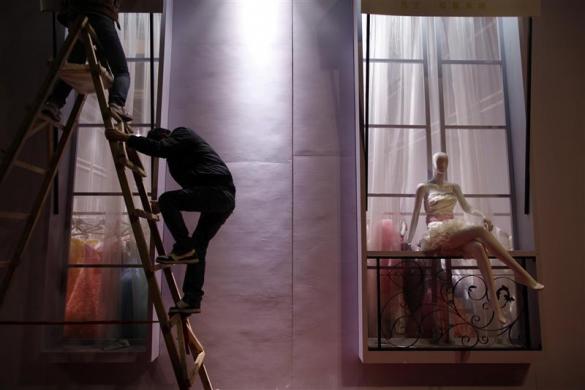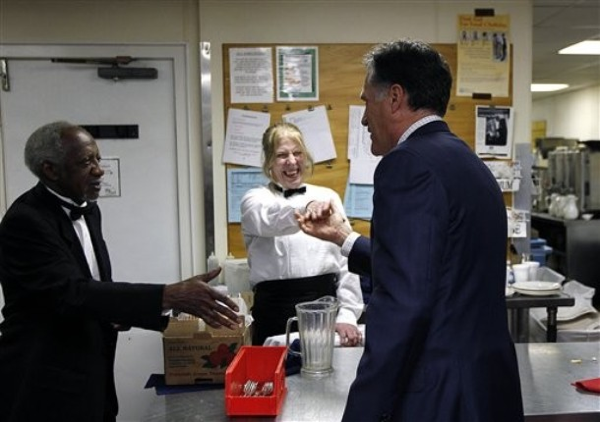Notes
Guttenfelder's Fukushima: Contemplating a Future Without Us
Congratulation to David Guttenfelder for the well-deserved recognition this week from both World Press (3rd prize, General News) and POYi (2nd place – Photographer of the Year, Freelance). POYi has a larger body of his work whereas WPP has the Fukushima series alone.
What’s so powerful about Guttenfelder’s nuke disaster photos is how “silent” and humbling they are, framing the disaster as an “ego check” and portentous of a future without us. The photo of the abandoned house in Okuma is noteworthy not just as a record of the moment of evacuation, a document of how people slipped away without a second to lose. The image seems to also the play on the viewer’s own sense of safety, judgement and mortality knowing that tomorrow, the radiation cloud might be heading our way. With that fear hovering, can’t you suddenly make out a body in each of those blanket bundles? And then, to the extent the photo reflects our own chances in similar circumstances, do you notice the four people outside the screen, just waiting for us to grab our pants so we can all escape together?
click for full size
And then, there’s the rusting car near Namie. If we typically assume ourselves to be nature’s guardian, in this photo, we’re literally “out of the picture.” Even more eerie, especially if it’s dawn, there’s the suggestion nature is getting over us.
click for full size
And then, there’s this lone “populated” shot taken a half-mile from the Fukushima plant. What makes this so silent, so deadly is how it takes the most freedom- and possibility-affirming scene in American mythology — the open road — and turns it on its head with this science fiction-y, post-apocalyptic, WTF vision of iodine dinners, a closet full of Tyveks, and the inescapable conclusion — in no way a fantasy — that we blew it.
(caption 1: 09 July 2011: Residents had no chance to put their homes in order before their hasty exodus, prompted by evacuation orders on televised news conferences before dawn on 12 March. This bedroom is in Okuma, less than three miles from the damaged nuclear plant. The tsunami caused a number of nuclear accidents, primarily the meltdowns at three reactors in the Fukushima Daiichi Nuclear Power Plant complex, and the associated evacuation zones affected hundreds of thousands of residents. caption 2: 24 July 2011: Months after the tsunami, grass sprouts from this wrecked car inside the nuclear exclusion zone on the coast near Namie. Concern over radiation prevented immediate cleanup of debris littering the coast of Fukushima in the aftermath of the tsunami. The tsunami caused a number of nuclear accidents, primarily the meltdowns at three reactors in the Fukushima Daiichi Nuclear Power Plant complex, and the associated evacuation zones affected hundreds of thousands of residents. caption 3: 05 June 2011: A lone animal rights activist walks along the Fukushima coast, less than half a mile away from the damaged nuclear power plant. Some animal rescuers defied restrictions as they sought to aid pets and farm animals left behind. The tsunami caused a number of nuclear accidents, primarily the meltdowns at three reactors in the Fukushima Daiichi Nuclear Power Plant complex, and the associated evacuation zones affected hundreds of thousands of residents.)




Reactions
Comments Powered by Disqus